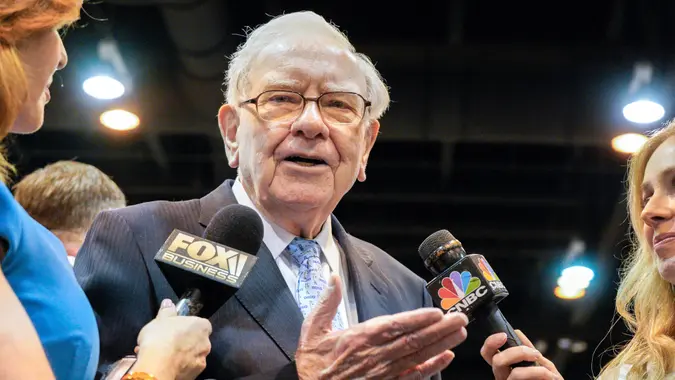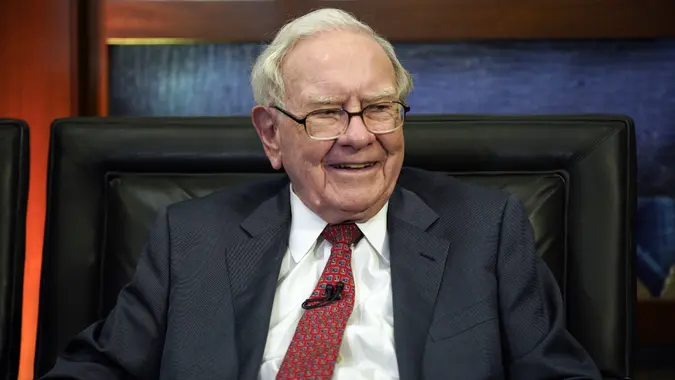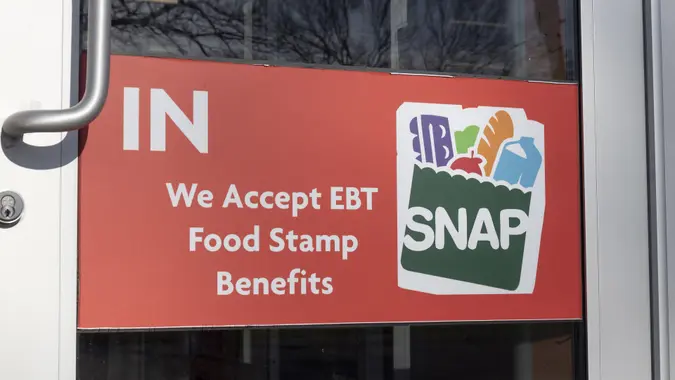4 Biggest Differences Between Harris and Biden’s Economic Plans

Commitment to Our Readers
GOBankingRates' editorial team is committed to bringing you unbiased reviews and information. We use data-driven methodologies to evaluate financial products and services - our reviews and ratings are not influenced by advertisers. You can read more about our editorial guidelines and our products and services review methodology.

20 Years
Helping You Live Richer

Reviewed
by Experts

Trusted by
Millions of Readers
As the race for the White House intensifies, Vice President Kamala Harris is trying to distance herself from the economic plans of Donald Trump. At the same time, Harris is trying to highlight differences between her economic ideas and those of President Joe Biden.
Here’s a look at some of the biggest differences between Harris’s economic plans and those of President Biden.
“More Ambitious”
First, it’s key to understand why Harris as a presidential candidate is trying to show how her economic plans are different from the Biden administration.
After a speech earlier this month, Politico noted, “Vice President Kamala Harris used a speech on her economic platform Friday to try to distinguish herself as a candidate from President Joe Biden, casting her agenda as more ambitious and forward-looking.”
In a similar way, The Hill reported, “As Kamala Harris unveiled her economic policies last week, one thing stands out: Her approach combines populist and regulatory policies to tackle economic issues that have hurt middle- and low-income families.”
“Laser-Focused” on the Middle Class
Speaking of the middle and lower-income classes, Harris has tried to make her message to them as clear as the words on large banners and signs at her events: A Better Way Forward.
According to Politico, “The nature of Harris’ policy rollout underscored the key challenge for her truncated campaign: distancing herself from a Biden presidency dented by memories of soaring inflation and voters’ perception that conditions are getting worse, while retaining and building on the Biden policies that have largely succeeded in revitalizing the post-pandemic economy and delivering a slew of long-term benefits for the working class.”
Among other things, Harris is seen as wanting to let voters know that there have been successes under the Biden administration in areas like job creation and a recent decrease in inflation. At the same time, she has told voters that more work needs to be done and she is “laser-focused on creating opportunities for the middle class.”
“More Aggressive”
It’s yet to be determined if voters like this approach, but Harris has been seen as going after big business in a more aggressive way than President Biden. For instance, she recently blamed corporations for “price gouging” and causing prices to soar at the grocery store. Her words came as many Americans continue to deal with high prices and economic uncertainty.
Per Politico, “That has made for a striking contrast from Biden, who never completely warmed to efforts to shift the blame for inflation to big business and often softened his own populist rhetoric with reassurances that he was a ‘capitalist.'”
Talking About Women and Small Businesses
As we head into the November election, you may see Harris talking more about her economic plans that she believes will benefit working women and small businesses.
Per NPR, “A former Harris adviser told NPR that it was important to the vice president to bring people to the table who traditionally have not had a seat — and she did that through her work with small businesses and community-development financial institutions.”
Editor’s note on election coverage: GOBankingRates is nonpartisan and strives to cover all aspects of the economy objectively and present balanced reports on politically focused finance stories. You can find more coverage of this topic on GOBankingRates.com.
 Written by
Written by  Edited by
Edited by 

























